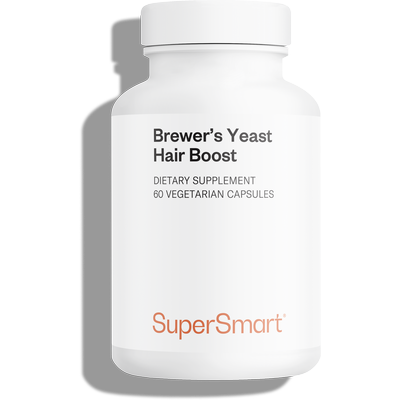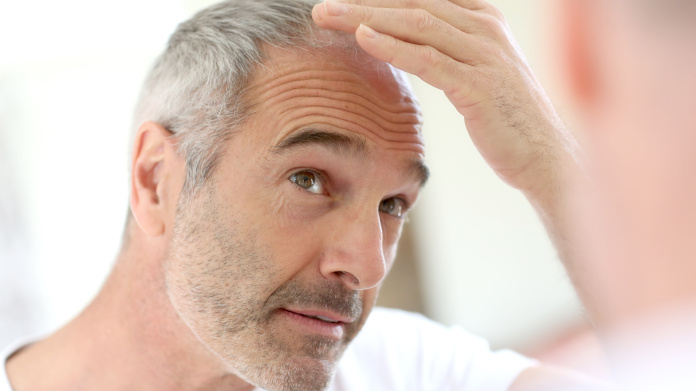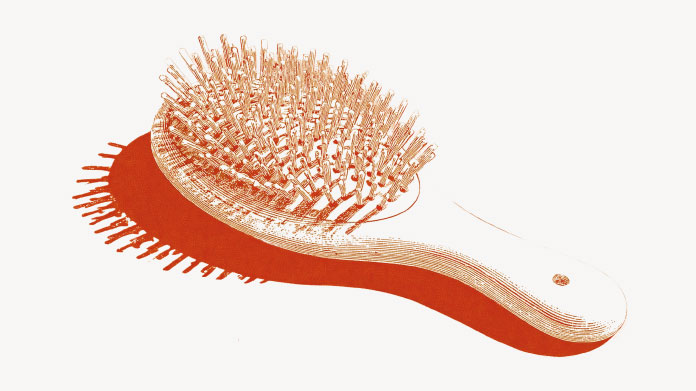What are the benefits of brewer’s yeast?
Packed with essential nutrients, brewer’s yeast is a nutritional gem. What are its proven benefits for health?

Reminder: what is brewer’s yeast?
Brewer’s yeast is a microorganism which, like baker’s yeast, is part of the Saccharomyces cerevisiae family. Produced in a controlled environment conducive to its growth, it plays a role in the fermentation of beer, where it converts sugars into alcohol and carbon dioxide. Sugar cane molasses and other nutrient substrates can also be used to cultivate brewer’s yeast.
Once collected and dried, this microscopic fungus is converted into powder, dehydrated flakes (for sprinkling on salads for example) or dietary supplements in tablet or capsule form. Inactive brewer’s yeast will have been heated to 40°C to ensure its stability without altering its nutritional profile.
Brewer’s yeast: key health benefits
Brewer’s yeast and hair
It’s no coincidence that naturopaths recommend brewer’s yeast for restoring strength and radiance to dull, damaged or thinning hair! This nutritionally-rich food contains a wide range of B group vitamins, which are involved in energy metabolism and cell regeneration: B1 (thiamine), B2 (riboflavin), B3 (niacin), B5 (pantothenic acid), and especially B8 (biotin), the famous ‘beauty vitamin’ which helps maintain healthy hair (1).
Brewer’s yeast’s high protein content, particularly the sulfur-containing amino acids, facilitates restructuring of the hair fibre, which is made up of 95% keratin (2). This is in addition to its significant content of zinc, an essential trace-element and pillar of good hair health (3).
Brewer’s yeast and skin
Taking brewer’s yeast is typically recommended for those with skin imperfections, because of its combination of vitamins B2, B3 and B8, all of which help maintain healthy skin. Its potential for regulating sebum production and skin inflammation (both key factors in acne) is often mentioned too, though studies are still needed to confirm this (4). Meanwhile its content of zinc, which plays a role in normal DNA synthesis and the protection of cells against oxidative stress, helps to brighten the complexion and delay the first signs of ageing (5).
Brewer’s yeast and nails
Together with hair and body hair, the nails are part of the integumentary system – a protective physical barrier characterised by high keratinisation. Again, it seems the protein in brewer’s yeast, aided by the biotin which supports normal protein metabolism, is able to strengthen brittle or damaged nails by contributing to keratin production.
Brewer’s yeast and the liver
Murine (mouse model) studies suggest that brewer’s yeast is able to modulate the activity of hepatocytes (liver cells). This research has highlighted changes in cholesterol metabolism, attributable to a specific yeast fraction (nicotinamide riboside), as well as in glucose tolerance (6-7). Scientists have also looked at the effects of yeast extracts on alcohol-induced liver damage in rats (8).
Brewer’s yeast and sleep
Is it true that brewer’s yeast can help you sleep better? While there’s limited scientific literature on the subject, brewer’s yeast is one of the best dietary sources of vitamin B1 (10g provides 100% of the recommended daily intake). Supporting normal nervous system and psychological function, this vitamin is involved in the production and absorption of serotonin, a neurotransmitter responsible for regulating mood and precursor of melatonin (the sleep hormone) (9). So why not!
Brewer’s yeast and immunity
Brewer’s yeast also contains specific polysaccharides able to interact with our immune system. A study on elderly mice supplemented with brewer’s yeast showed an astonishing ‘reactivation’ of immune mechanisms, with an upsurge of lymphocytes in the blood, thymus and spleen (10). A clinical trial involving 162 subjects prone to recurrent infections (colds) suggested promising effects from the beta-glucans in brewer’s yeast on the body’s ability to fight pathogens (11).
What downsides or side-effects are associated with brewer’s yeast?
Despite its many benefits, brewer’s yeast also has certain disadvantages to bear in mind.
In susceptible individuals, its fermentation activity can cause digestive problems: bloating, flatulence, etc., though these are mainly observed when the yeast is in its active form. It is not recommended for those with inflammatory bowel disease (Crohn’s, ulcerative colitis) or irritable bowel syndrome as it may make symptoms worse. It should also be avoided by anyone highly-sensitive to biogenic amines (which trigger migraines).
As it contains tyramine, brewer’s yeast should not be taken in conjunction with MAOI anti-depressants or meperidine (a narcotic), as this can increase the body’s adrenergic response, causing sudden surges in blood pressure (12).
And as it remains ‘live’, active brewer’s yeast should not be taken by immunocompromised individuals as there is a theoretical risk of septicaemia when fungi cross the intestinal barrier and enter the bloodstream (13).
Active or inactive brewer’s yeast, which is best?
Unlike the inactive version, active brewer’s yeast retains probiotic activity which may be beneficial in cases of gut flora imbalance. However, it is less well-tolerated by the digestive system and is in principle riskier for those in more delicate health.
Despite the fact it is heat-treated, inactive brewer’s yeast retains all its nutrients (vitamins, minerals, antioxidants…) and essential properties, including cosmetic ones. It’s worth noting that in some supplements targeted at tired or damaged hair, positive effects on the scalp are boosted by the addition of zinc, vitamin B6 and biotin (as in the product Brewer's Yeast Hair Boost, which has a high dose of inactive brewer’s yeast with a minimum 40% protein, and is enriched with the above-mentioned nutrients) (14).
SUPERSMART ADVICE
References
- Bistas KG, Tadi P. Biotin. [Updated 2023 Jul 3]. In: StatPearls [Internet]. Treasure Island (FL): StatPearls Publishing; 2024 Jan-. Available from: https://www.ncbi.nlm.nih.gov/books/NBK554493/
- Piccolo M, Ferraro MG, Maione F, Maisto M, Stornaiuolo M, Tenore GC, Santamaria R, Irace C, Novellino E. Induction of Hair Keratins Expression by an Annurca Apple-Based Nutraceutical Formulation in Human Follicular Cells. 2019 Dec 13;11(12):3041. doi: 10.3390/nu11123041. PMID: 31847069; PMCID: PMC6950555.
- Kondrakhina IN, Verbenko DA, Zatevalov AM, Gatiatulina ER, Nikonorov AA, Deryabin DG, Kubanov AA. Plasma Zinc Levels in Males with Androgenetic Alopecia as Possible Predictors of the Subsequent Conservative Therapy's Effectiveness. Diagnostics (Basel). 2020 May 24;10(5):336. doi: 10.3390/diagnostics10050336. PMID: 32456296; PMCID: PMC7277952.
- Podgórska A, Puścion-Jakubik A, Markiewicz-Żukowska R, Gromkowska-Kępka KJ, Socha K. Acne Vulgaris and Intake of Selected Dietary Nutrients-A Summary of Information. Healthcare (Basel). 2021 Jun 3;9(6):668. doi: 10.3390/healthcare9060668. PMID: 34205209; PMCID: PMC8226785.
- Gupta M, Mahajan VK, Mehta KS, Chauhan PS. Zinc therapy in dermatology: a review. Dermatol Res Pract. 2014;2014:709152. doi: 10.1155/2014/709152. Epub 2014 Jul 10. PMID: 25120566; PMCID: PMC4120804.
- Holdsworth ES, Kaufman DV, Neville E. A fraction derived from brewer's yeast inhibits cholesterol synthesis by rat liver preparations in vitro. Br J Nutr. 1991 Mar;65(2):285-99. doi: 10.1079/bjn19910087. PMID: 2043605.
- Holdsworth ES, Neville E. Effects of extracts of high- and low-chromium brewer's yeast on metabolism of glucose by hepatocytes from rats fed on high- or low-Cr diets. Br J Nutr. 1990 May;63(3):623-30. doi: 10.1079/bjn19900148. PMID: 2116896.
- Lin Z, Li Y, Wang M, Li H, Wang Y, Li X, Zhang Y, Gong D, Fu L, Wang S, Long D. Protective effects of yeast extract against alcohol-induced liver injury in rats. Front Microbiol. 2023 Jul 20;14:1217449. doi: 10.3389/fmicb.2023.1217449. PMID: 37547679; PMCID: PMC10399763.
- Mrowicka M, Mrowicki J, Dragan G, Majsterek I. The importance of thiamine (vitamin B1) in humans. Biosci Rep. 2023 Oct 31;43(10):BSR20230374. doi: 10.1042/BSR20230374. PMID: 37389565; PMCID: PMC10568373.
- El-Naggar RE, Attia WY. Brewer's Yeast Supplementation Enhances Immune Response of Aged Mice. Egypt J Immunol. 2015 Jun;22(2):69-79. PMID: 28502146.
- Auinger A, Riede L, Bothe G, Busch R, Gruenwald J. Yeast (1,3)-(1,6)-beta-glucan helps to maintain the body's defence against pathogens: a double-blind, randomized, placebo-controlled, multicentric study in healthy subjects. Eur J Nutr. 2013 Dec;52(8):1913-8. doi: 10.1007/s00394-013-0492-z. Epub 2013 Jan 23. PMID: 23340963; PMCID: PMC3832763.
- Garcia E, Santos C. Toxicité des inhibiteurs de la monoamine oxydase. [Mise à jour le 17 juillet 2023]. Dans : StatPearls [Internet]. Île au trésor (FL) : StatPearls Publishing ; 2024 janvier-. Disponible sur : https://www.ncbi.nlm.nih.gov/books/NBK459386/
- Aucott JN, Fayen J, Grossnicklas H, Morrissey A, Lederman MM, Salata RA. Invasive infection with Saccharomyces cerevisiae: report of three cases and review. Rev Infect Dis. 1990 May-Jun;12(3):406-11. doi: 10.1093/clinids/12.3.406. PMID: 2193348.
- Liu G, Cheng G, Zhang Y, Gao S, Sun H, Bai L, Li S, Zhu Y, Wang C, Li F. Pyridoxine regulates hair follicle development via the PI3K/Akt, Wnt and Notch signalling pathways in rex rabbits. Anim Nutr. 2021 Dec;7(4):1162-1172. doi: 10.1016/j.aninu.2021.09.003. Epub 2021 Oct 2. PMID: 34754958; PMCID: PMC8556489.
14 Hours
Quality products
Quality products , efficient and effective customer service. You can’t ask more
CLaudia
6 Days
Good quality product and customer service.
So far, I'm liking this product, and the customer service was very good.
ELZL
13 Days
The products I use are excel·lent
The products I use are excel·lent
ROSAS Josep Maria
21 Days
Delivery is prompt and I never saw a…
Delivery is prompt and I never saw a quality problem with the manufacturing. It is not possible to assess efficacy on a personal basis, since too many factors come into play. Efficacy can only be assessed statistically with a sufficient number of cases.
Roger De Backer
22 Days
I collaborates with the Supersmart…
I collaborates with the Supersmart more than 10 years. Every thing is going good. Quality of the things is good. Delivery comes in time. Five stars definitely !!!
Oleksiy
22 Days
All good
Simple, frictionless site, easy ordering, good delivery updates and execution.
Chris Robbins
24 Days
I feel better
I feel better
Peter Ammann
24 Days
Prompt delivery
Prompt delivery
JAKUB Radisch
26 Days
My new go-to for top quality supplements!
I am buying more and more of my supplements from this superb, high quality company. Cannot recommend it enough. Plus, excellent customer service with a quick, helpful team and speedy deliveries. Highly recommend Supersmart!
Cecilie H.
29 Days
SUPERSMART WHAT ELSE👍
SUPERSMART WHAT ELSE👍
DIEDERLE Christophe
32 Days
Excellent quality products with…
Excellent quality products with innovative formulas, as someone who has been suffering with acid reflux, these supplements have been lifesavers.
Oriana Moniz
32 Days
high quality supplement!
high quality supplement!
GALANT
33 Days
Good service prompt delivery
Good service prompt delivery
Mrs Marcella Reeves
38 Days
I like your clear explanation
I like your clear explanation. And how to make a choice of products for a specific health problem
Ingrid
44 Days
Great product and it arrives quickly.
Great product and it arrives quickly.
SOMMARIVA Gianni




